The singular behavior of the seafaring community (both sailors and those family members and workers whose livelihood depends on the sea) constitutes a source of identity and a distinction that marks them out from other communities. Taken together, these distinctive characteristics are expressed in such a way as to form an authentic maritime culture enabling its members to recognize, understand and communicate with each other. This culture consists of a broad and hidden compendium of values, beliefs, norms and commitments that, while not immediately noticeable, become evident by the way in which the members of this community explain and justify their behavior.
This behavior is certainly influenced by the conditions in which they carry out their work. We should not forget that the ultimate purpose of sailors is to ensure a safe voyage while achieving their objectives, which are to overcome the ever-present challenges posed by machinery, storms and the perils of the sea in order to arrive safely at port. This type of professional life is richer in such extreme demands than the more conventional work carried out on land, and exerts a direct influence on the distinctive way in which the seafaring community behaves.
The overall perception of this range of experience is often expressed through a particular view of the world. Seafarers convey a utopian vision of frontiers and limits, which are not necessarily those of land dwellers and are more closely associated with a qualitative rather than a material outlook, which in turn gives them a broad sense of freedom and adventure.
It is clear that this profile, as described, provides them with all the ingredients required for playing the leading role in tales guaranteed to attract a mainstream, majority audience.
Thus, whether or not we feel close to this reality, story writers have undertaken to depict for us characters and situations that take place in the maritime world, whether it be in books, films, television series, cartoons… or comics.
Numerous artists, cartoonists and scriptwriters have in their works depicted the seafaring world in all kinds of publications: albums, magazines, comic-books, graphic novels and so on. Comics dealing with stories that are universal have gradually gone beyond geographical borders to achieve worldwide recognition. In Europe, such popular characters as Tintin (from Hergé, in Belgium) and Asterix (from Uderzo and Goscinny, in France), or Prince Valiant in the USA (from the Canadian Harold Foster) have all been closely associated with the sea.
But if we had to choose one of these characters (not counting the stereotyped Captain Haddock, friend and accomplice of the mythical Tintin), it would probably be Corto Maltese, who was created by the cartoonist and scriptwriter, Hugo Pratt (Italy, 1927- Switzerland, 1995). Pratt, who was Venetian by adoption, also led a strange life that carried him from his youth in Ethiopia during the Second World War to travels in Argentina, the United Kingdom and eventually back to Italy, where he introduced for the first time Corto Maltese, the character on whom he was to work as both scriptwriter and cartoonist between 1967 and 1988, interspersed with other publications unconnected with the Corto series.
In an entertaining and attractive way, Pratt recounts for us the most outstanding events of the early 20th century, told from the point of view of an exceptional witness: the sailor Corto Maltese (1887-1936, according to information in the different works). Son of a Spanish gypsy and an English sailor, Corto embodies the prototype of the mariner par excellence, the adventurer who sails under no flag, the treasure hunter and defender of lost causes (a good example being his death in the Spanish Civil War, as we are told by his creator, who never actually drew this story).
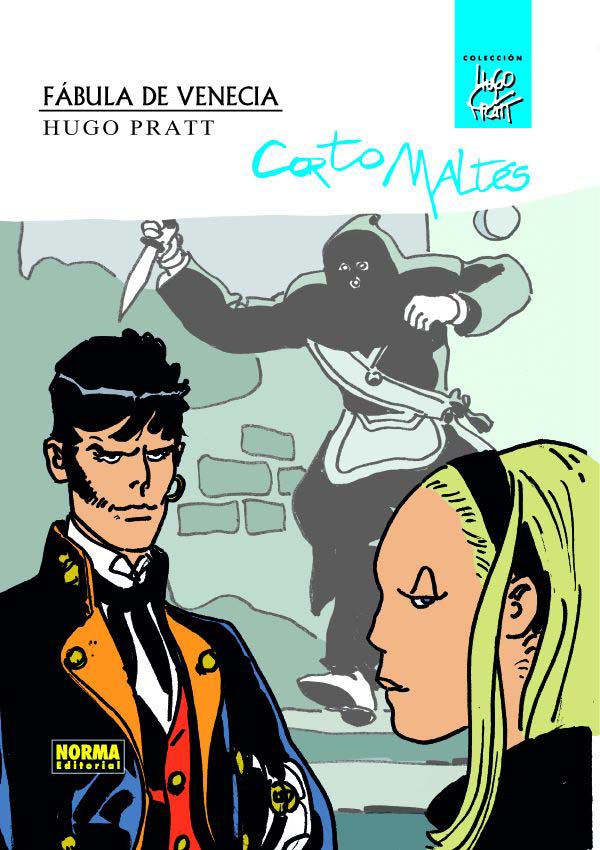 “Fable of Venice”, Hugo Prat, 1977. Comic cover of the spanish edition of Norma Editorial.
“Fable of Venice”, Hugo Prat, 1977. Comic cover of the spanish edition of Norma Editorial.
This character made his first appearance in “The Ballad of the Salt Sea”, published in installments between 1967 and 1969, the story of which takes place between 1913 and 1915 and depicts Corto Maltese as a pirate in the Pacific, accompanied by secondary characters who were to appear again in subsequent tales. The titles of his later adventures bear the names of the port cities where the stories take place: “Under the Sign of Capricorn” (published in 1970, a journey through different cities in Latin America in 1916); “Always a Little Further” (also published in 1970, Corto helps the Brazilian cangaçeiros in 1917; “The Celts” (published in 1971), and “The Ethiopians” (published in 1972), which take Corto through Ireland and England in 1918.
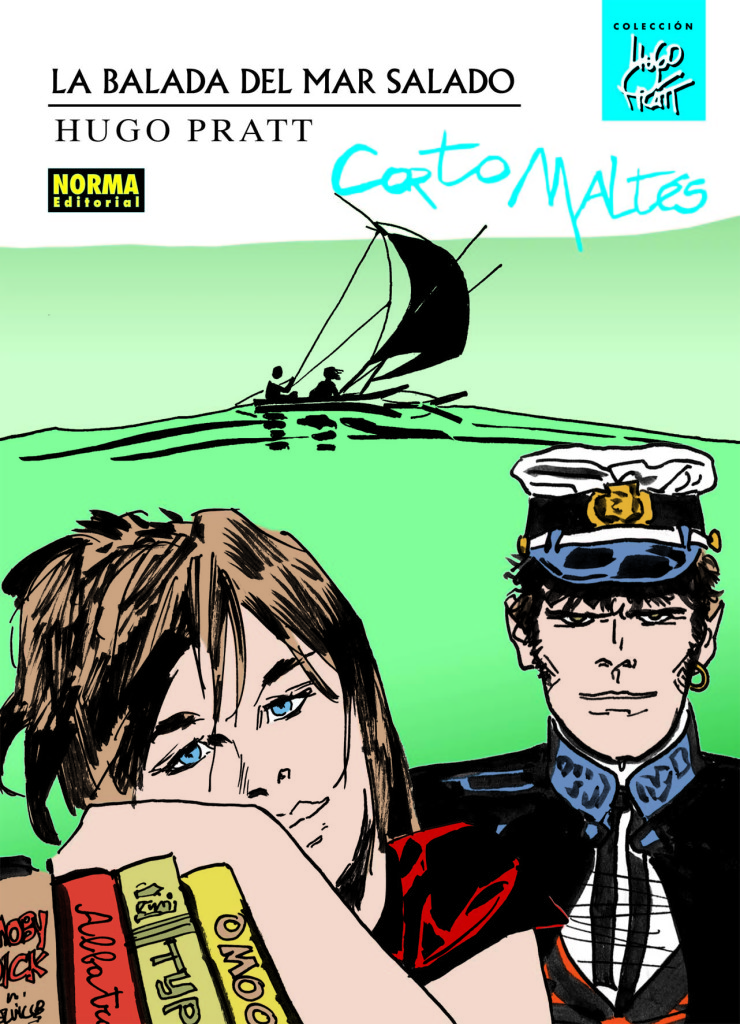 “The Ballad of the Salt Sea”, Hugo Prat, 1967. Comic cover of the spanish edition of Norma Editorial.
“The Ballad of the Salt Sea”, Hugo Prat, 1967. Comic cover of the spanish edition of Norma Editorial.
It is necessary to point out, however, his many visits to the city of Venice, which is depicted above all in the work “Fable of Venice”, published in 1977. Set in 1920, it tells the tale of Corto’s conflicts with freemasons and gunmen at the outset of Fascism in Italy. It is a classical tale of the search for treasure, full of the mysticism associated with this archetypal port city – the city of canals.
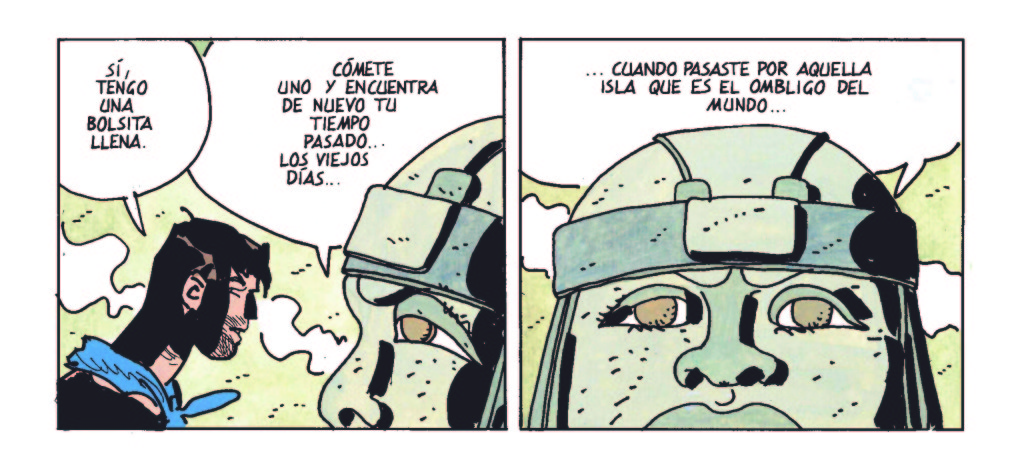 “Mu”, Hugo Prat, 1988. Inside the comic of the spanish special edition of Norma Editorial.
“Mu”, Hugo Prat, 1988. Inside the comic of the spanish special edition of Norma Editorial.
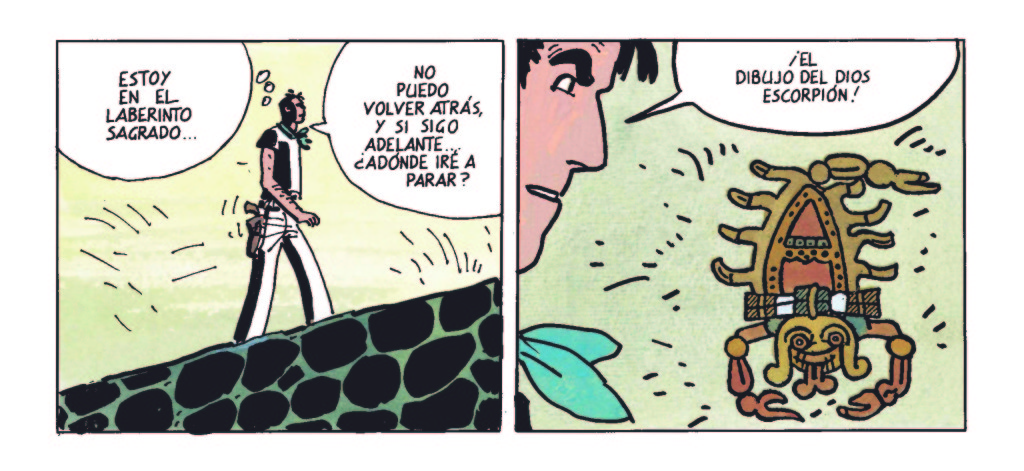 “Mu”, Hugo Prat, 1988. Inside the comic of the spanish special edition of Norma Editorial.
“Mu”, Hugo Prat, 1988. Inside the comic of the spanish special edition of Norma Editorial.
Today, his last adventure to be published stands as a symbol of the ideal sailor-adventurer: the quest for the lost continent. In his tale “Mu”, published in installments between 1988 and 1991, in which Corto descends to the depths of the Pacific Ocean, Pratt creates a graphic allegory of the history of lost continents and the origin of humanity, making this the most emblematic and mystical of all his stories and one which was to become the last chapter in one of the best graphic series of the 20th century.
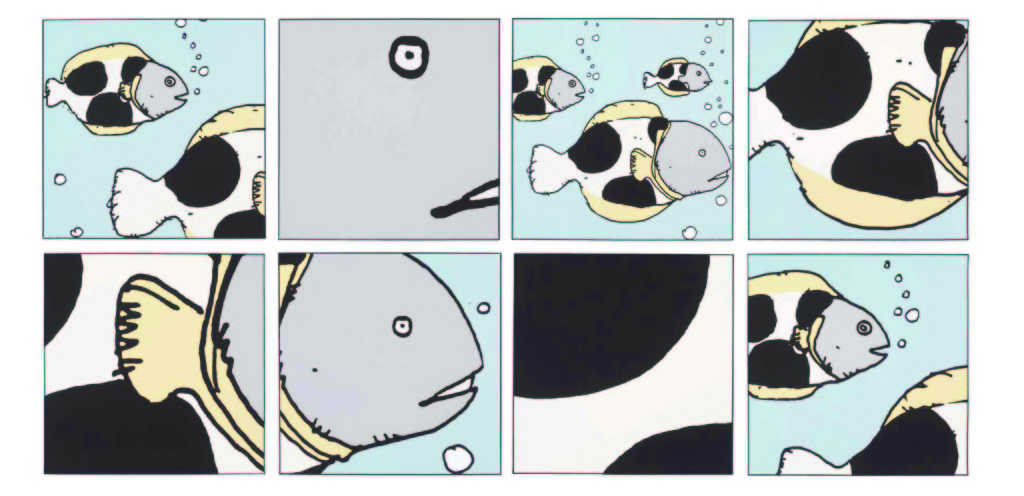 “Mu”, Hugo Prat, 1988. Inside the comic of the spanish special edition of Norma Editorial.
“Mu”, Hugo Prat, 1988. Inside the comic of the spanish special edition of Norma Editorial.
With the character of Corto Maltese, the mariner who forged his own destiny (and in this case, never better said), Pratt showed that he understood better than any comic book writer and artist the genesis of the seafaring community. As a young man, when a gypsy soothsayer read his palm, Corto was surprised to find that he had no fate line, and then carved his own in his hand with a knife…
… the sailor steered his own course.
Marineros de papel
El comportamiento peculiar de la gente de mar (que son tanto los que navegan como los que viven alrededor del mar, familiares y trabajadores) configura una fuente de identidad y de diferenciación propia, que los caracteriza. Se manifiestan de una forma particular que se expresa constituyendo en su conjunto una auténtica cultura marítima, que permite a los miembros reconocerse, comunicarse y entenderse entre ellos. Comprende un conjunto muy amplio y oculto de valores, creencias, normas y compromisos, no directamente observables pero que se pueden observar de la manera como las personas explican y justifican su comportamiento.
Un comportamiento seguramente influenciado por las condiciones en las que se desarrolla su actividad. No olvidemos que la finalidad última de un navegante es asegurar la estabilidad del viaje y la consecución de los objetivos, que son llegar a puerto, superar las permanentes crisis de máquinas o las tormentas y peligros del mar. Este tipo de vida profesional es más rico en estas exigencias extremas que los trabajos normales que podemos desarrollar en el suelo, e influye directamente en el comportamiento peculiar de la gente de mar.
La percepción global del conjunto de sus experiencias la suelen expresar en una visión particular del mundo. Transmiten una visión utópica de las fronteras y los límites, que no son necesariamente las de la gente de tierra adentro, y se sitúan más próximos a los aspectos cualitativos que no los materiales, lo que les da un sentido amplio de libertad y de aventura.
Evidentemente, el perfil descrito tiene todos los ingredientes para protagonizar historias que atraigan a un público generalista y mayoritario. Así que, independientemente de nuestra proximidad a esta realidad, los autores de ficción se han encargado de mostrarnos personajes y situaciones que acontecen en el universo marítimo y que han reflejado en los libros, en las películas y series de televisión… y, también, en las viñetas.
Numerosos artistas, dibujantes y guionistas de diferentes procedencias, han reflejado en sus obras el universo marítimo en todo tipo de publicaciones: álbumes, revistas, comic-books, novelas gráficas, etc. Los cómics que abordan historias universales han trascendido las fronteras hasta hacerse poco a poco mundialmente reconocidos. En Europa personajes tan populares como Tintin (de Hergé, en Bélgica) y Astérix (de Uderzo y Goscinny, en Francia), o, en USA, el Príncipe Valiente (del canadiense Harold Foster), todos ellos tuvieron un vínculo especial con el mar.
Pero quizás, si tuviéramos que destacar uno de ellos (más allá del estereotipado Capitán Haddock, amigo y cómplice del mítico Tintin), sin duda sería el personaje de Corto Maltese, creado por el dibujante y guionista Hugo Pratt (Italia, 1927- Suiza, 1995). Pratt, veneciano de adopción, tuvo también una vida peculiar que le llevó en su juventud a Etiopia durante el conflicto bélico mundial, para más tarde viajar a Argentina, Reino Unido y de nuevo a Italia, desde donde presentó por primera vez el personaje de Corto Maltese, en el que trabajaría como guionista y dibujante entre 1967 y 1988, siempre intercalando con otras publicaciones sin relación con la serie de Corto.
Pratt nos mostró de una forma entretenida y atractiva, la historia de los acontecimientos más importantes de las primeras décadas del siglo XX, narradas desde la perspectiva de un testigo de excepción: el marinero Corto Maltese (1887-1936, según los datos que aparecen en las diferentes obras). Hijo de una gitana española y un marino inglés, Corto escenifica el prototipo del marinero por excelencia, del aventurero sin bandera, del buscador de tesoros y del defensor de causas perdidas (un buen ejemplo es su muerte en la guerra civil española, tal y como aseguraba su autor a pesar de que no llegó nunca a dibujar esta historia).“Fable of Venice”, Hugo Prat, 1977. Comic cover of the spanish edition of Norma Editorial.
En su primera aparición, en “La Balada del Mar Salado”, publicada por entregas entre 1967 y 1969, el relato acontecía entre 1913 y 1915, con un Corto Maltese convertido en un pirata del Pacífico y presentando personajes secundarios que aparecerían en algunos de los siguientes títulos. Sus aventuras posteriores se pueden explicar con los nombres los ciudades portuarias donde transcurrían las historias: “Bajo el signo de Capricornio” (publicada en 1970, es un viaje por diversas ciudades de latinoamérica en 1916); “Siempre un poco más lejos” (publicada también en 1970, donde ayudará a los cangaçeiros brasileros en 1917; y “Las Célticas” (publicada en 1971), y “Las Etiópicas” (publicada en 1972) que le llevaran por tierras de Irlanda e Inglaterra alrededor de 1918.“The Ballad of the Salt Sea”, Hugo Prat, 1967. Comic cover of the spanish edition of Norma Editorial.
Pero sin duda cabe destacar sus diversas visitas a la ciudad de Venecia, siendo su máximo exponente la obra “Fábula de Venecia” publicada en 1977 y que narra en 1920 sus conflictos con la masonería y los pistoleros de una incipiente Italia fascista, en una aventura clásica de búsqueda de un tesoro en un relato cargado del misticismo propio de la ciudad portuaria por excelencia: la ciudad de los canales. “Mu”, Hugo Prat, 1988. Inside the comic of the spanish special edition of Norma Editorial. “Mu”, Hugo Prat, 1988. Inside the comic of the spanish special edition of Norma Editorial.
Su última aventura publicada constituye hoy en día todo un símbolo del ideal del navegante aventurero: la búsqueda del continente perdido. En la obra “Mu”, publicada por entregas entre 1988 a 1991, Corto baja a las profundidades del pacífico, creando el autor una alegoría gráfica de la historia de los continentes perdidos y el origen de la humanidad, convirtiendo la obra en la más simbólica y mística de todas ellas, y que se acabaría convirtiendo en el último capítulo de una de las mejores series gráficas del siglo XX. “Mu”, Hugo Prat, 1988. Inside the comic of the spanish special edition of Norma Editorial.
Pratt supo entender mejor que ningún otro autor gráfico la génesis de la gente de mar con el personaje de Corto Maltese, un marinero que forjó su propio destino, y nunca mejor dicho como en este caso. Cuando en su juventud una gitana al leerle la mano se sorprendió al ver que no tenía línea de la fortuna, Corto se hizo él mismo una a su gusto con una navaja…
… el navegante trazó su propio rumbo.